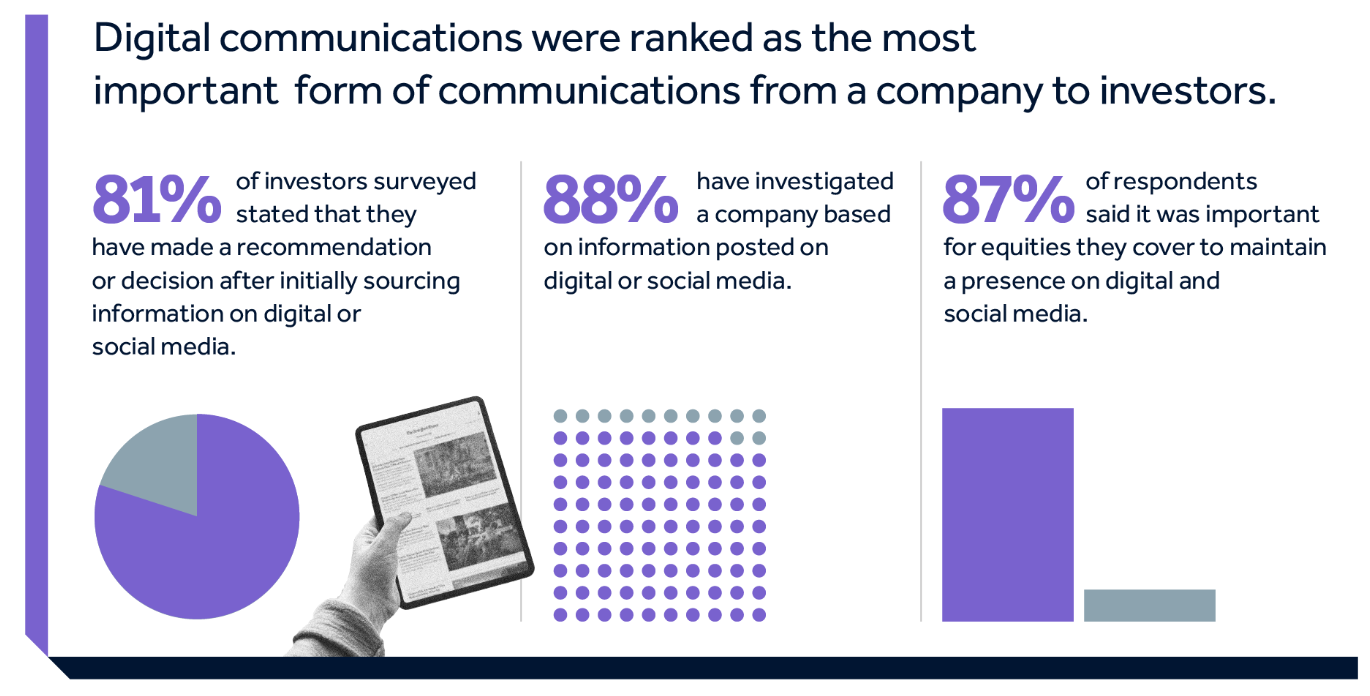In this episode we’re asking: How valuable is social media to attract investment? A few years ago, I was talking to the founder of a fund manager who was telling me about how he used Facebook, Twitter, and LinkedIn to gather intelligence on how well businesses were using social media and other digital channels to engage their key stakeholders.
He wasn’t in his twenties or thirties and he certainly wasn’t posting photos on social media of his lunch. He just wanted to get a sense of the business’ ability to adapt and to scale by what he saw online as another input around the decision of whether or not to invest. It sounds really simple and smart, but it’s certainly not common.
And there are plenty of others I’ve spoken to within the investment community who still feel like social media is a fad or a waste of time. But their views, the founders and my own are just opinions. What does the data say? And just how valuable is social media to the investment world today?

I’m so pleased to be joined on the Your Digital Reputation podcast by Janelle Nowak-Santo, partner at Brunswick Group in the US and lead author for the recent Digital Investor Survey. Tune in, take a read below and be sure to subscribe to the newsletter too so you don’t miss a beat.
Roger Christie: In this market, Brunswick does have a presence here, but I think it would be helpful for people to get an overview of the Digital Investor Survey, why you do it at Brunswick and your role in its development.
Janelle Nowak-Santo: Of course. So for a little bit of background on the Digital Investor Survey – basically what it does is it takes a look at how institutional investors are using digital, where they get their information to inform their equity research. And most importantly, how that information impacts their investment decisions. So I think it’s important as you think about the survey to define a little bit of who our audience is. Institutional investors, as we define them, are buy-side investors and sell-side analysts at large companies that trade securities on behalf of their investors. This could include pension funds, mutual funds, insurance companies, university endowments, and sovereign wealth funds.
Brunswick doesn’t offer commentary on whether they are making the right decisions but just where they are gathering their information. And why do we do this? We complete this work so that by understanding the behaviors of investors, we can provide our clients valuable investor communication advice beyond just traditional IR, but certainly in combination with it.
Roger Christie: If you look at when the survey was published and you look at where we are today, the evolution of TikTok as an example of a platform and the changes that are happening there in terms of government response and regulation around the globe, that’s something that’s going to be different in next year’s survey. So with that backdrop, with that context, what was different about this year’s results? What were some of the stand out findings from your perspective?
Janelle Nowak-Santo: So what we’re finding this year, as you might expect, is that institutional investors are becoming more digitally native. They’re making investment decisions based on the information they find on these digital channels. For example, 81% of investors we heard from this year said that digital usage impacts their investment decisions.
The investors we surveyed also said that digital is the top source for equity research. 88% of them said they have investigated an equity based on a digital or social media post. This makes sense as you think about all the touch points investors have with companies now and how they access this information. No longer is it just an earnings press release or one source of research. So this is the baseline and the landscape that we’re operating in for this year.
Roger Christie: I think one of the things that strikes me in there was that 87% of respondents said it was important for the equities they covered to maintain a presence. So it’s not just that they’re using these channels. There’s an expectation now that individual leaders will speak up and then because of that, it’s important to ensure that they are present and visible where investors expect them to be or where investors themselves are active and present. And also that there’s clear alignment between not just what the institution and the individuals are saying, but those individuals as a cohort. There’s got to be alignment or you really risk saying or doing something that undoes good work in other areas. If we look around global markets right now in terms of instability and economic concerns, was there anything that flew in the face of that? Or is it all aligned in terms of investor attitudes?
Janelle Nowak-Santo: What surprised us about this year’s results is that there was much more of an even split between the sources, which investors find of high importance. There was a high distribution of channels which were of high importance, specifically LinkedIn, Google, YouTube, newsletters etc. But what was really surprising overall was how many of these channels investors are using.
… And I work for a communications firm. So I want to make sure that we’re clear on this point. This is not to say traditional channels are dead. It is to say alone though, they’re no longer enough. I feel very firmly about that. What really came through is that investors say they use these digital channels to cover the gaps from traditional media.
And along those same lines, when covering those gaps, we talked about trust. Specifically, we asked the question, how much do you trust the following print, online media, digital, and social media sources to give you accurate and useful information? And the findings were interesting on this approach too. Despite these recent big changes in the social landscape from Elon Musk and the Dogecoin for example, trust in digital platforms and sources remains on par or higher than some mainstream media outlets. For example, LinkedIn and email newsletters had similar average trust ratings in New York Times and The Economist. That’s huge, right? So, they’re not just getting their information from these sources in a traditional way, but online as well.

Roger Christie: If I can refer back to the Digital Investor Survey, I remember a statement that you made that I loved. Something along the lines of efforts by organisations to engage investors are too static and stale compared to other stakeholders, which I agree with. You said, ‘Companies and their leadership need to be actively thinking about how to communicate with their investors using their own channels creatively and proactively beyond the earnings cycle’. And it’s that last piece that I find really important there. No one will be surprised to know that these channels are out there. No one will be surprised to know that they could be using them more effectively. But that point about this is it’s not simply a quarterly or a biannual thing. This is not something that you’re doing as and when you’ve got an announcement to make it. The impression I get from that message is this is always on. This is a way to build a relationship, trust and rapport with your audiences.
Janelle Nowak-Santo: Investors are not just familiar with these mainstay digital channels, LinkedIn, Google, etc. They are familiar with TikTok, and though the future is uncertain, I don’t think it’s really going anywhere in a major way from at least the US domestic market. But, please don’t interpret this as I’m saying we need an investor communication strategy for every single brand on TikTok. But I am saying that investors are using these channels and businesses need to be aware of it.
I think about the types of content that are on these platforms. This is rich content that you can consume quickly and creatively. This isn’t rocket science, right? This is just being thoughtful and strategic about communicating with the audiences that you care about. And it’s understanding that investors are a part of these audiences, too. And you need to take that into account.
CLICK HERE TO TUNE INTO THIS CONVERSATION IN FULL. ROGER CHRISTIE + JANELLE NOWAK-SANTO: How valuable is social media to attract investment?
Feel free to drop Roger Christie a note with any thoughts from this conversation. If you want more on all things digital reputation, be sure to subscribe below to the Your Digital Reputation newsletter packed full of advice, trends and the best leadership examples just for you.


